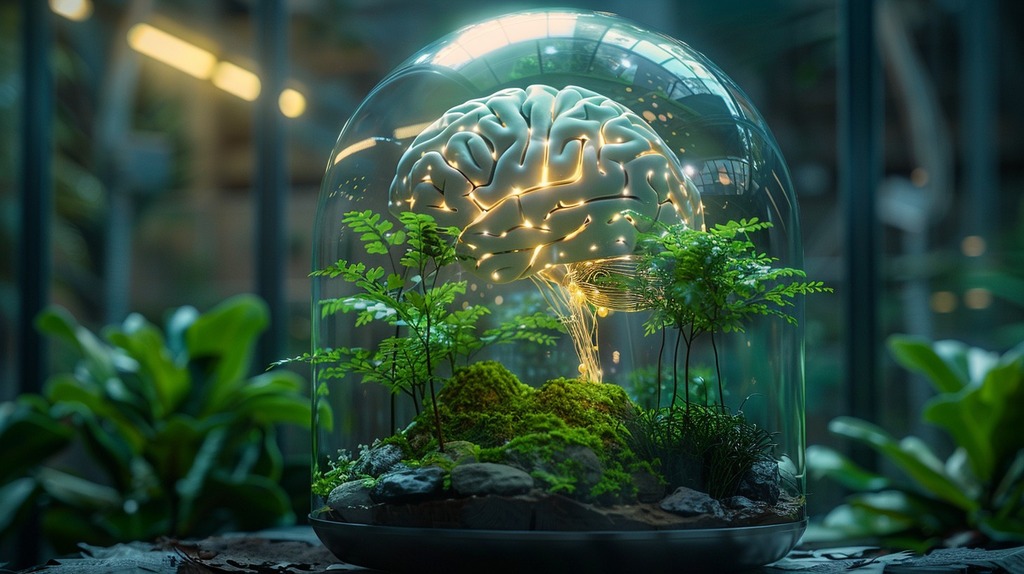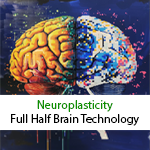On various scales, neuroplasticity—also referred to as brain plasticity or neural plasticity—is brought on by cellular alterations, including the strengthening or weakening of synapses. This capacity to compensate for damage and illness and modify their actions accordingly is essential for learning, the basic building block of the brain.
Consider for a moment that many brain regions can take over control of functions when one region is injured. Considering that the human mind is fit for self-mending and transformation, it really is a marvel of nature. The brain grows new capacities and abilities. This flexibility underscores its significance.
Table of Contents
Half Brain Neuroplasticity
Studies have shown that one of the most remarkable examples of neuroplasticity is the concept of “half-brain neuroplasticity.” It means that the brain can recognize itself, even if half of it is removed or damaged. The reason behind this is that the brain can realize itself and take over missing functions. Those people who have neural problems in the half brain can still lead a normal life.
The most striking example of neuroplasticity is noticed in patients, where half of the brain is removed or detached to treat severe epilepsy. Curiously, half-brain patients can live a normal life.
Case Study: The “Glass-Half-Full Girl“
An aspiring case Mora Leeb is a girl, who lost half her brain at a young age, due to a severe medical condition, She has shown significant cognitive and physical abilities, thanks to her brain’s plasticity. Regardless of the substantial loss, her half-brain hemisphere began to take over many of the functions once managed by the removed part. Read More.

Does the Brain Grow New Neurons?
For a long time, researchers accepted that people are brought into the world with a limited number of neurons, and the most common way of developing new neurons was unrealistic for adults.

However, ongoing research has shown this view, demonstrating the way that the brain can grow the mind without a doubt and develop new neurons, an interaction known as neurogenesis. Physical activities like exercising, meditating, and learning new skills have been shown to encourage neurogenesis—the formation of new neurons.
Diet: An eating regimen rich in cell reinforcements, omega-3 unsaturated fats, and different supplements can uphold neurogenesis. Eating an eating regimen high in cell reinforcements, omega-3 unsaturated fats, and different supplements can advance neurogenesis.
What is the power of neuroplasticity?
The power of neuroplasticity lies in its ability to shape and adapt throughout our lives. The dynamic process has revolutionized our understanding of the brain and its potential for growth and development. Understanding it and controlling brain flexibility will allow us to develop strategies to improve mental capacity, enhance learning abilities, and potentially lessen the effects of mental aging and neurodegenerative diseases. The implications of neuroplasticity are vast and profound, impacting various aspects of life and recovery

Various activities of neuroplasticity include:
- Brain Injuries Learning skills: By using this method, recovery from brain injuries, challenging mental activities, learning an instrument, or picking up a new language, for example, can encourage the development of new brain connections.
- Physical exercise: This is a fundamental way to learn new skills Regular aerobic exercise is important as it allows the brain to adapt and change in response to new information.
- Mental Health and Meditation: Neuroplasticity has opened new avenues for treating mental health conditions, leading to personal growth, and self-improvement such as depression and anxiety. Cognitive-behavioral therapy (CBT) is one method that uses neuroplasticity to its advantage and has been shown to significantly enhance mental health.
Conclusion
Brain adaptability is a demonstration of the cerebrum’s mind-blowing strength and flexibility. Neuroplasticity is a powerful concept that has revolutionized our understanding of the brain and is a fundamental, incredible resilience property.
Whether it’s recovering from and through cellular changes from a significant brain injury, mastering new abilities, or defeating emotional well-being difficulties, the mind’s capacity to redesign and shape new brain associations is at the center of these cycles.
As we continue investigating the secrets of the cerebrum, adaptability will play a basic role in molding how we interpret the mind and its true capacity for change and variation.
Our brains are incredibly resilient and adaptable, as evidenced by the amazing cases of people living with half of a brain and the finding that adult brains can create new neurons. Through comprehension and utilization of neuroplasticity, we may augment our mental well-being and elevate our standard of living.








Great insights! I found your take on sustainable living incredibly practical. Looking forward to implementing some of these tips! Check out for more inspiring content.